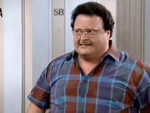CSH
Active Member
As I drill down in my understanding of ebikes and their components, I wonder if one Spec is simple, or more complex.
Nm Numan Meters 40/50/60/90/120
Is it as simple as More is Better ?
ie: for Urban Hill Climbing (in my case)
As I narrow bike choices down, Do I look for the one with more Nm ?
or is there more to it than that ?
I'm eager to understand, better.
Any advice is appreciated,
Craig
Nm Numan Meters 40/50/60/90/120
Is it as simple as More is Better ?
ie: for Urban Hill Climbing (in my case)
As I narrow bike choices down, Do I look for the one with more Nm ?
or is there more to it than that ?
I'm eager to understand, better.
Any advice is appreciated,
Craig
